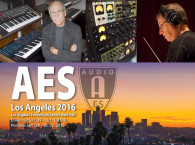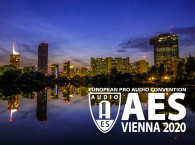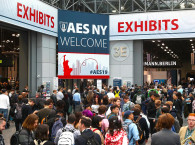
The Audio Engineering Society has unveiled the detailed calendar of events for the highly-anticipated 141st AES International Convention in Los Angeles, taking place Thursday, September 29 – Sunday, October 2, 2016. With a full range of events and presentations spanning all segments of the audio industry, the AES Los Angeles Convention offers four full days of information and inspiration, led by industry leaders in science and practice, with attendance packages suited for every level of audio professional, student or enthusiast.
From the latest research and technology presentations to the largest pro audio gear exhibition and showcase of the year, with many of the greatest ears in audio in attendance, the AES Los Angeles Convention calendar is continuously updated and available at www.aes.org/events/141/program/.
The AES Los Angeles Technical Program and Events calendar, both online and in the free AES Events app, provides the clearest overview of the wide array of events covering Broadcast and Streaming Media, Recording and Production, Game Audio, Live Sound, Networked Audio, Product Design, Sound for Picture and much more. Sessions are laid out according to areas of interest, with varied program material featuring Tutorials, Workshops, Research Paper Presentations and Engineering Briefs, as well as a host of special guest speakers, expert panel presentations and face-to-face networking opportunities. Additional Student and Career events, Historical sessions, Tech Tours, Standards meetings and other standard AES Convention programs will also take place.
“The AES L.A. technical program is amazing in its range and depth,” stated AES Executive Director Bob Moses. “The AES 141 Convention committee has kept up the tradition of luring the best minds in the industry to share the latest in research, product development and practical applications – with sessions suited for every level of experience and expertise, across the wide span of audio disciplines. Browse the calendar and start planning ahead. While member, student and partner discounts make many events free, to get the most out of attending the Convention, register for an All Access pass – and for the best value, act now before prices go up at the end of August!”
Dave Smith to Give AES Heyser Lecture
The AES has announced that legendary instrument designer and “Father of MIDI” Dave Smith will give the convention’s Richard C. Heyser Memorial Lecture on September 29 at 6PM at the Los Angeles Convention Center. The presentation, titled “Synthesizers: From Analog to Digital to Software to Analog,” will explore the ongoing evolution of instrument design and synthesis and the 50-year history of the synthesizer and its impact on music and audio.

First established in 1999 by the AES Technical Council and the Board of Governors in conjunction with the Richard Heyser Scholarship fund, the Heyser Lecture series, featured at each AES Convention, brings eminent individuals in audio engineering and related fields to speak on a relevant topic of choice. The Heyser Lecture is part of the Special Events schedule, open to all convention attendees.
As a pioneer in fundamental synthesizer and MIDI design, Smith will relate his 40-plus years in the industry at the AES Los Angeles Convention: Musical synthesizers first appeared in the '60s as large modular beasts covered with cables. In the early '70s, portable monophonic instruments became available, leading to a gradual acceptance by musicians in popular music. In the late '70s, fully programmable polyphonic analog synths came out, and the synthesizer went mainstream. Things changed dramatically in the '80s as digital synths appeared: first the FM-based DX-7 and eventually the M-1 sample playback synth. From that point onward, digital was the norm. In the '90s, digital synths continued and were implemented in software as computers gained enough power for native signal processing. For 25 years, analog synths were generally not available. Things have changed in the last 10 years, though. Musicians started searching for old analog synths and began using them again. New analog synths became available. Modular synths are back, and very popular. Throughout this 50-year history of the synthesizer, its impact on music of all genres has been very significant.
Dave Smith is an instrument designer, AES Fellow, GRAMMY-winner and founder of Sequential Circuits. In 1977, he designed the Prophet-5, the first polyphonic and fully programmable synthesizer, and the first musical instrument with a microprocessor. He was the driving force behind the MIDI specification, also having coined the acronym himself. Later, Smith became President of DSD, an R&D division of Yamaha. He also started the Korg R&D group in California. He was then President at Seer Systems and developed the first software synth for Intel in 1994, followed by the first professional soft synth, Reality. He returned to hardware, starting Dave Smith Instruments in 2002. The Dave Smith Instruments lineup includes the Prophet 12, Prophet ’08, Pro 2, Mopho and Tetra synths, and the Tempest drum machine, co-designed with legendary designer Roger Linn. The Sequential Prophet-6 analog synth was released in 2015, followed by the OB-6 designed in partnership with Tom Oberheim.
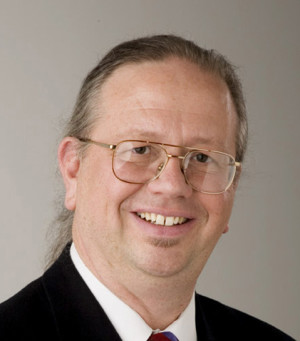
Historical Sessions at 141st AES International Convention
The Audio Engineering Society will also celebrate the rich history of professional audio through a series of Historical Track presentations at the 141st International AES Convention in Los Angeles. Sessions cover the innovative and interesting histories of iconic recording studios, acoustics and technology design, sound reinforcement of historical events and more, curated by Historical Events chair Mark Gander of Harman Professional Solutions.
AES Los Angeles Historical Events sessions are slated to include:
“Political Audio: Sound for Past and Recent Presidential Debates and Conventions”
A panel of industry professionals with first-hand experience working on past and present presidential events will come together to discuss the sound reinforcement, broadcast, and audio communications production and workflow of these historic happenings. Panelists include consultant Ken Fause, audio expert Dave Brand, and sound designers Michael Abbott, Patrick Baltzell and Stan Miller.
“The Great British Recording Studios”
Author Howard Massey will explore the origins of the fabled “British Sound” and celebrate the people, equipment and innovative recording techniques of the day through rare photographs, videos and musical examples covering many historic studios and sessions. Panelists will include Geoff Emerick, Dave Harries and Malcolm Toft.
“History of Studio Acoustic Design”
Studio designer George Augspurger, of Perception Incorporated, will give his perspective from over six decades of studio design. Covered will be the evolution of applied acoustics from the 1960’s to the present day, outlining the development of modern studio design principles by presenting key examples of projects and a timeline of historic events that influenced studio development.
“Horns and Waveguides: Evolution of Technology”
This tutorial by Alex Voishvillo of HARMAN will give a retrospective review of horns and waveguide technology including both theoretical design aspects as well as a retrospective review of patented practical developments.
“Historic Microphone Technologies and Their Connection to Pop Vocal Performance”
AES President-Elect Alex Case leads this session highlighting how lessons from audio history can be used to drive our decisions for getting the right vocal sound at our next gig, specifically by analyzing initial limitations in microphone technology and the slow-but-steady advancement of the audio technologies available at the time.
“Control Systems and Electroacoustical Considerations for Large-Scale Loudspeaker Arrays: Past, Present & Future”
The AES’s David Scheirman reviews four decades of system development, presenting highlights of the evolutionary process from control-only networks to networked digital audio, and migration paths from powered speaker arrays to line array elements to beam-steerable systems, as well as developments that have taken place since the 6th International Conference (Sound Reinforcement) and the 13th International Conference (Computer-Controlled Sound Systems), with content at these landmark AES events having foreshadowed today’s high-powered loudspeaker arrays that incorporate beam-steering technology.
Historical Events chair Mark Gander comments, “The AES Historical Track sessions present achievements by audio pioneers whose innovative ideas and inventions have contributed to this industry and beyond. The rich history of science and art in audio design and production has much to teach us about the future evolution of audio, and we look forward to sharing many of these great stories throughout the AES Los Angeles Convention.”
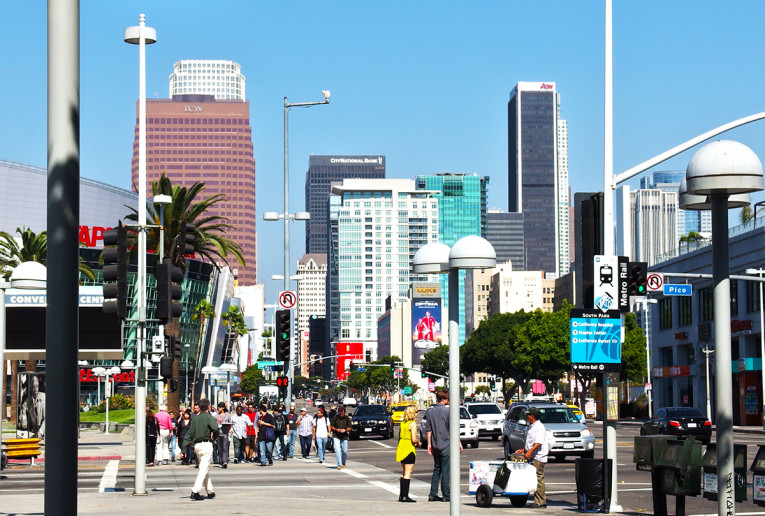
Early Registration pricing is now available for All Access badges, or attendees may register to receive a FREE Exhibit-Plus badge (promo code AES141NOW) for the AES Los Angeles Convention: aesshow.com.
Read more updates about the convention and see more info about the 141st AES International Convention in Los Angeles.
www.aes.org



